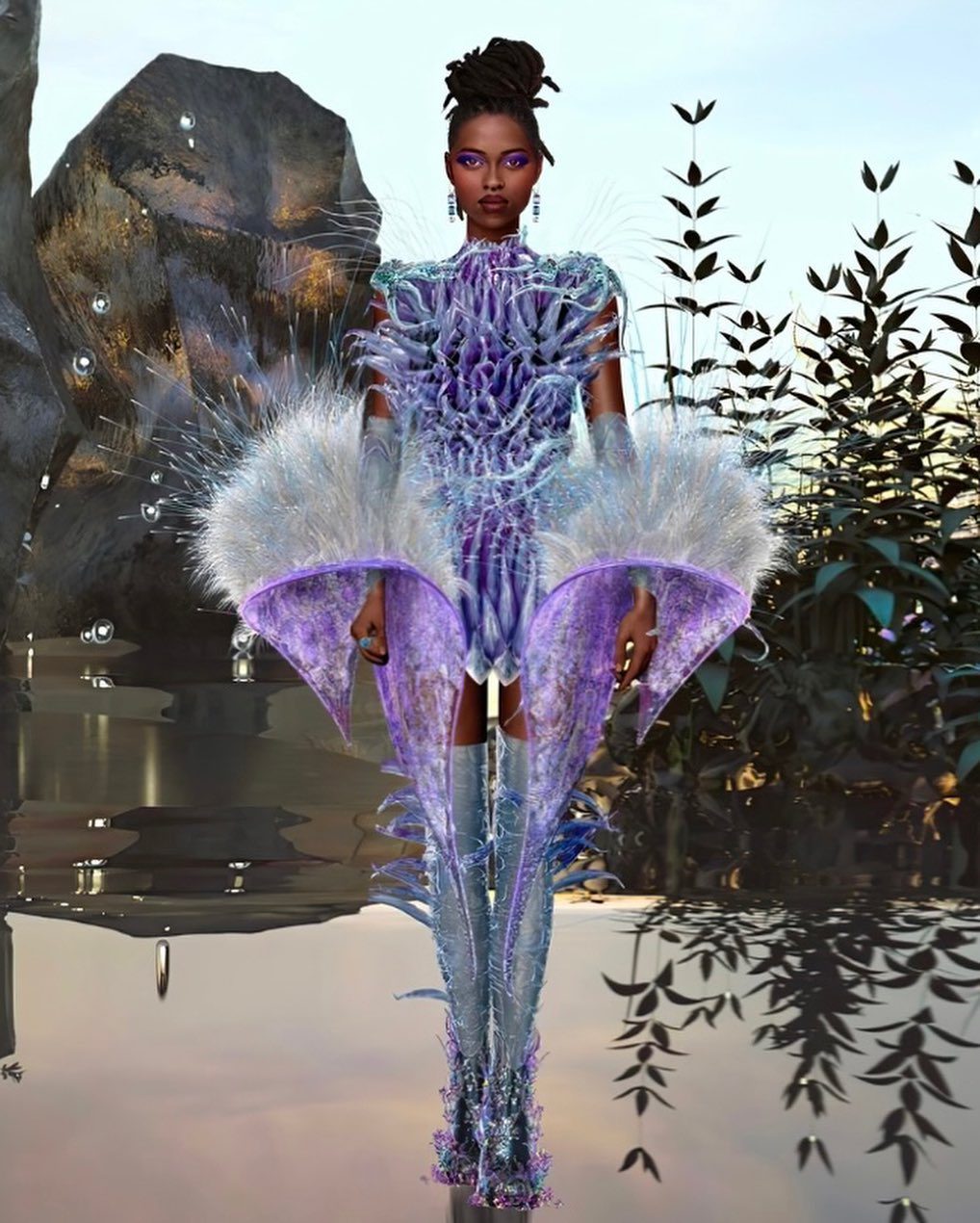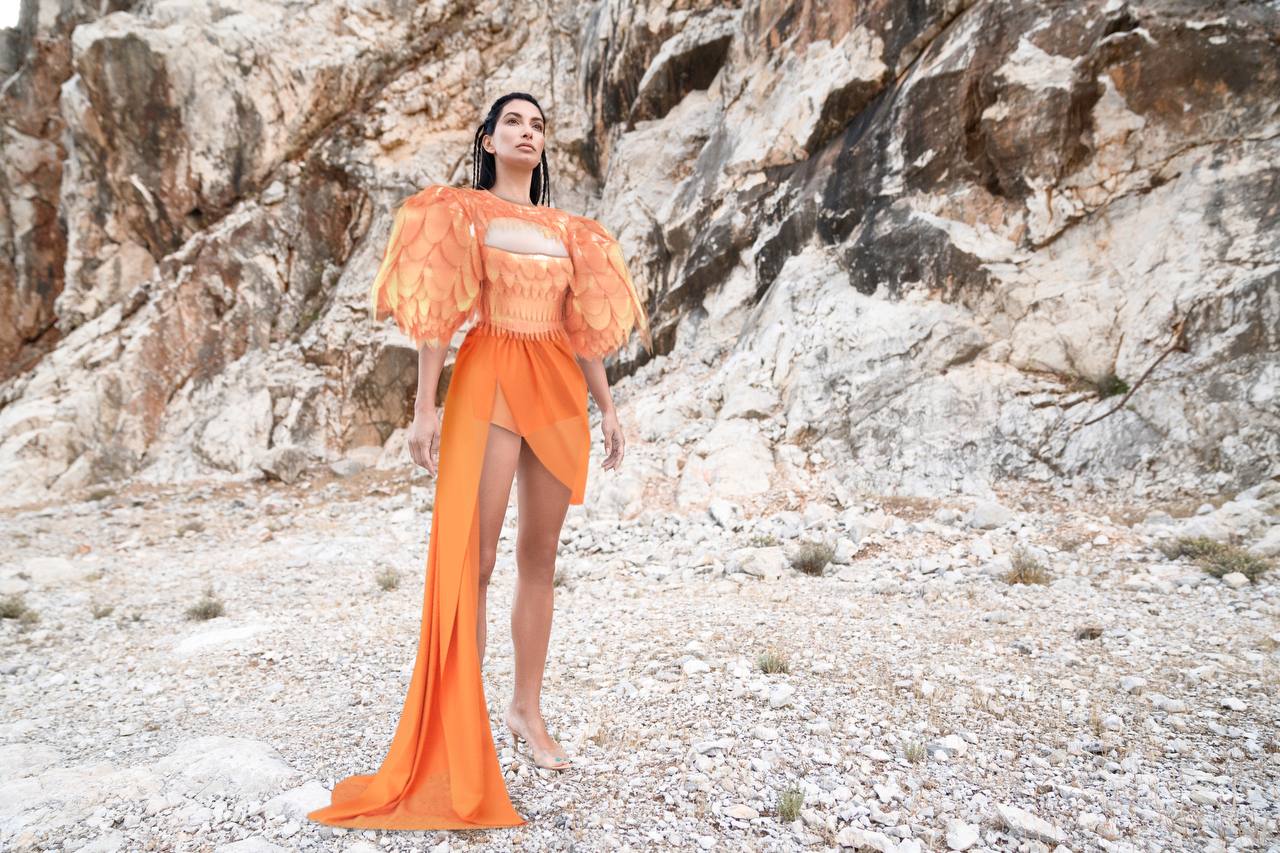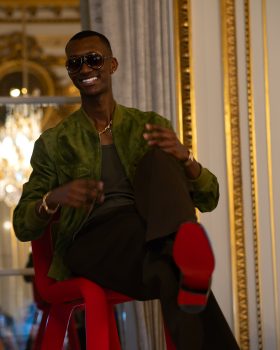As consumers spend more time online and the unprecedented interest in the metaverse continues to translate into virtual products, fashion brands continue to find new ways of staying relevant with consumers. It all began withBurberry’s first NFT collection with Blankos Block Party, Gucci’s Aria Collection Film at Christie’s and Louis Vuitton’s ‘Louis The Game’ NFT. So it is safe to perceive that alongside sustainbility, fashion’s major investment in 2022 would be digitalisation.

Image courtesy Auroboros
A prime example is also Social commerce, which is experiencing a surge in engagement from fashion brands and consumers as new functionality and increasing user comfort with the space unlocks opportunities for newer forms of shopping experiences from introduction to fashion brands right up to checkout. It is also perceived that fashion brands will double-down on custom-made in-app purchases, live-streaming and augmented reality try-on.
Ashwini Asokan, Founder and CEO of Vue.ai, tells Vogue, “Up until now, what we could do within an app was limited to specific functions and more passive consumption than active. The metaverse challenges these ideas that you do one thing in one space and be a consumer rather than an active creator. It opens up the idea that you can build elaborate worlds without the limitations you might have in your physical world. In so many ways, it democratises participation in the digital sphere in ways that race, geography, gender, caste and so many other aspects of life offline could limit you.”
In the UK, the Institute of Digital Fashion is guiding fashion’s transition to the metaverse. Per Vogue, ‘Founded by a group of digital natives, the organization launched its IRL x URL Academy to teach designers around the world how to translate their garments into virtual items. The group introduced its own virtual garment on the red carpet of Britain’s The Fashion Awards last month when guests like Kristen McMenamy, Gabrielle Union, Evan Mock and Kehlani tried the winged chestplate out. “We wanted to deliver a metaverse experience that also democratised the red carpet, democratising the notion of traditional red carpet moments, and merging the worlds of IRL x URL,” explained Elliott Young. “It was designed to be worn and paired on top of other garments.” The virtual piece was later sold as an NFT.’
“The digital arena is a wonderful community of free thinkers, and we wanted to shape that energy into a concise space, where those regardless of age, race, ability and gender could step into a career pathway of digital making,” Eliot Young told Vogue.
Daria Shapovalova and Natalia Modenova, co-founders of DRESSX, sell digital apparel and offer digitizing collections or creating it from scratch. “Digital fashion is currently in the spotlight of the blockchain community, because they see the value in digital assets that comes from the success stories in the digital art and NFT space. As traceability and provenance are key for high fashion, the implementation of NFTs and blockchain will definitely drive additional value to it. We plan to launch our own NFT marketplace to bring even more utility to digital fashion asset and allow fashion NFTs to be worn on photos and videos in AR only for the exclusive owners on the app, which already functions as a metacloset where users store their digital fashion outfits,” Modenova tells Vogue.

Maria Jones in a 3D Akhmadullina dress | Courtesy of DRESSX
This is a space that’s growing at a fast pace. The Fabricant, another player in the scene, sold one of their pieces, ‘Iridescence’, renowned as the world’s first digital-only dress, for reportedly $9500. RTFKT is also creating a foothold with NFTs that specialise in making digital sneakers. With this in view, will the fall winter 2022 runways be taken over by digital avatars? Per Vogue, ‘JW Anderson is already working on another project with Xydrobe, and revealed that his fall 2022 collection will be presented, in part, on digital cartoon characters. But maybe thinking about a runway show as phygital is already an antiquated idea. Anderson’s cardigan first appeared two-and-a-half years ago in June 2019—and it’s still one of fashion’s most popular items. If anything, digital fashion helps increase a garment’s lifespan, showcasing its value and intrinsic creativity. Tet offers another idea for what’s next—he says he’s taking the fall 2022 season off from working with Collina Strada and KNWLS: “I am waiting for those houses to finally sell designs versus actual garments. I could see designers selling 3-D models that you could then get made or printed with whatever materials you want.”‘
As brands make their plans and fallback plans for fall 2022 in view of the global pandemic, here’s hoping the new wave of phygital fashion shows and digitisation isn’t just about newness and freshness, but about integrating fashion with the metaverse.
Read More:
Jasmeen Dugal is Associate Editor at FashionABC, contributing her insights on fashion, technology, and sustainability. She brings with herself more than two decades of editorial experience, working for national newspapers and luxury magazines in India.
Jasmeen Dugal has worked with exchange4media as a senior writer contributing articles on the country’s advertising and marketing movements, and then with Condenast India as Net Editor where she helmed Vogue India’s official website in terms of design, layout and daily content. Besides this, she is also an entrepreneur running her own luxury portal, Explosivefashion, which highlights the latest in luxury fashion and hospitality.










